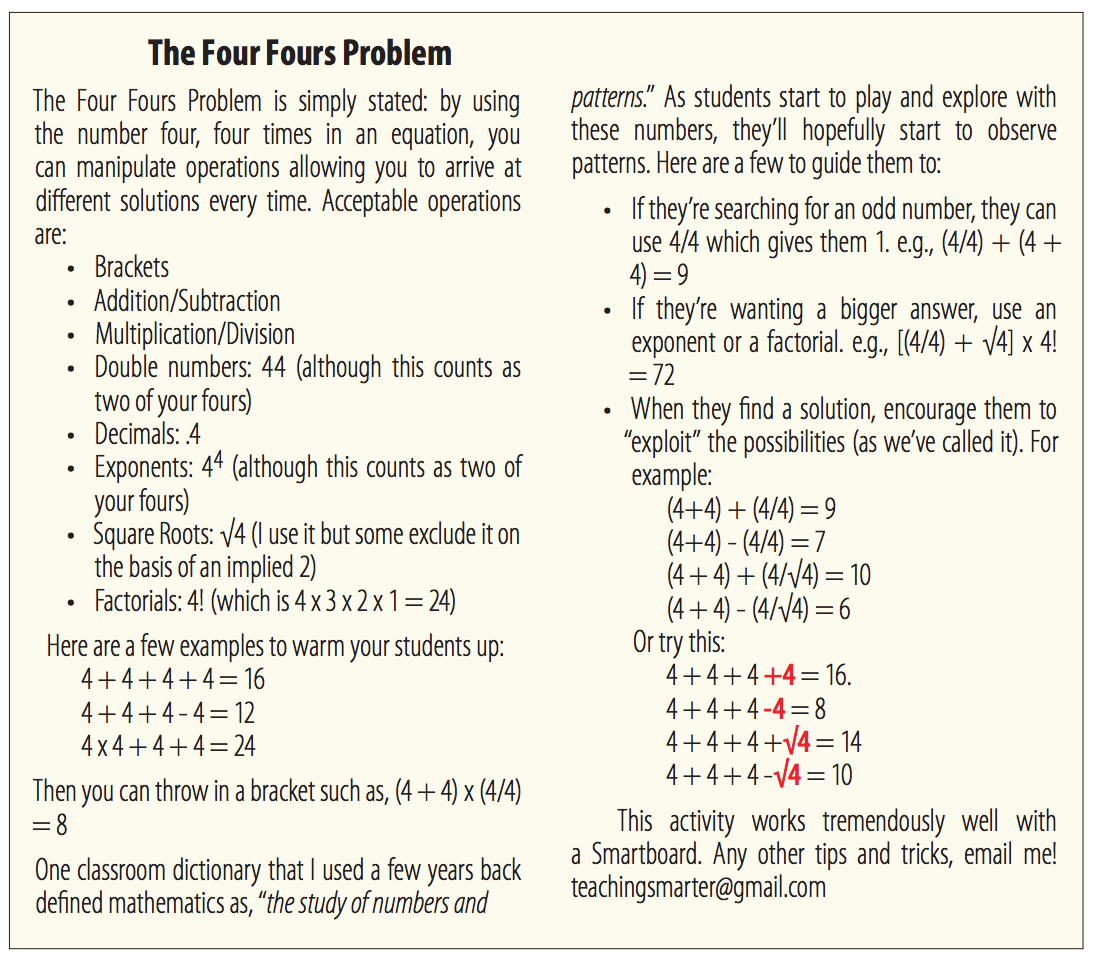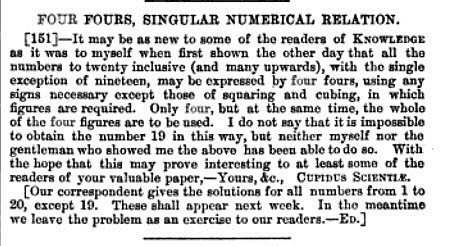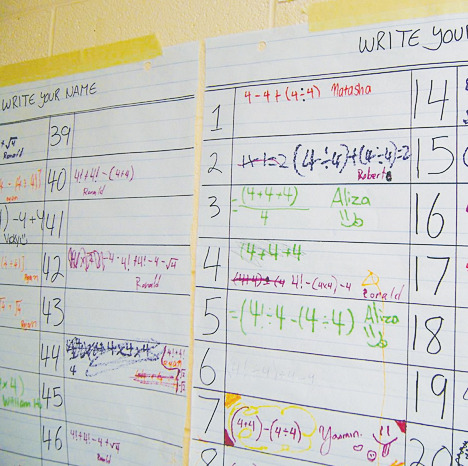I remember beginning my teacher’s college as a math-phobic. In high school, I was one of a thousand students who crawled their way through the minimum three credits, and stopped as soon as they could. The anticipation of the mandatory math class at Tyndale University’s Faculty of Ed rekindled thoughts of that gruesome grade 10 math class. My new professor, however, taught math a little differently. His strategy: rousing curiosity in his adult learners.
My strategy a half dozen years later is the same: rousing curiosity in my young learners. My professor was Trevor Brown, the acclaimed Canadian math educator who was Senior Editor for the Math Makes Sense textbook series. The very first day of his math class was how to teach division and I felt comfortable hiding behind the standard algorithm introduced in grade 5 division. I quickly learned that I didn’t need to hide because Trevor introduced it differently. Instead of forcing the algorithm, he introduced three different ways to divide, which triggered in me a curiosity for numbers. The Four Fours Problem was the most interesting problem he introduced that year and I’d like to share it with you and your math class.

The topic of the problem focuses on Order of Operation, which is first mentioned in grade 6 in both the Ontario and BC curriculum. Order of Operation is an important concept for students to learn because it gives a standard order in solving operations. In as early as grade 4 math, I’ve asked students to solve 2 x 3 + 4. Some will solve 2 x 3 = 6 and then add the 4 which gives 10. Others will start with the addition portion, solving 3 + 4 = 7 and then multiply the 2 which gives 14. We talk about how both answers could technically be right, but in math, there should be only one answer. This brings in the need for order to ensure everyone arrives at the same answer.
 The Four Fours Problem was first printed in Mathematical Recreations and Essays by W. W. Rouse Ball, dating back to 1892. In his writings, Ball references an earlier date of 1881, which is validated by the December 30, 1881, edition of Knowledge, An Illustrated Magazine of Science. You can see that the editor of the article posed the challenge to his readers to find the answer to number 19. One suggestion is: 4! – (4/4) – 4. Can you add your own equation?
The Four Fours Problem was first printed in Mathematical Recreations and Essays by W. W. Rouse Ball, dating back to 1892. In his writings, Ball references an earlier date of 1881, which is validated by the December 30, 1881, edition of Knowledge, An Illustrated Magazine of Science. You can see that the editor of the article posed the challenge to his readers to find the answer to number 19. One suggestion is: 4! – (4/4) – 4. Can you add your own equation?
 Since Order of Operation is taught in grades 6 to 8 across the country, and knowing that this unit will, therefore, be taught by your grade and division partners, why not include this activity as one that spans across multiple classrooms or grades. Start with students solving for the numbers 0 – 20. Then, open the challenge up by putting poster paper up in your hallway with the numbers 0 – 100, and challenge students to find solutions that equal one of those numbers. When they do, they put their equation down and add their name to the right. http://bit.ly/fourfours
Since Order of Operation is taught in grades 6 to 8 across the country, and knowing that this unit will, therefore, be taught by your grade and division partners, why not include this activity as one that spans across multiple classrooms or grades. Start with students solving for the numbers 0 – 20. Then, open the challenge up by putting poster paper up in your hallway with the numbers 0 – 100, and challenge students to find solutions that equal one of those numbers. When they do, they put their equation down and add their name to the right. http://bit.ly/fourfours
ABOUT THE AUTHOR
Ryan Tindale
Ryan Tindale is an occasional teacher with the DDSB in Ontario with a passion for math and technology; he’s taught over 450 teachers in the last three years at workshops and conferences. He thanks Ms. Anderson’s grade 8 class at Southwood Park PS for their 1 – 20 solutions. For more free creative lessons using technology, visit http://teachingsmarter.wix.com/home. Email Ryan at teachingsmarter@gmail.com.
This article is from Canadian Teacher Magazine’s Apr/May 2015 issue.









